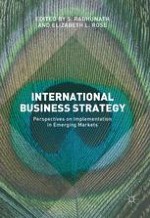2017 | OriginalPaper | Chapter
6. Do Spin-Offs Really Create Value? Evidence from India
Author : Venkatesh Kambla
Published in: International Business Strategy
Publisher: Palgrave Macmillan UK
Activate our intelligent search to find suitable subject content or patents.
Select sections of text to find matching patents with Artificial Intelligence. powered by
Select sections of text to find additional relevant content using AI-assisted search. powered by
